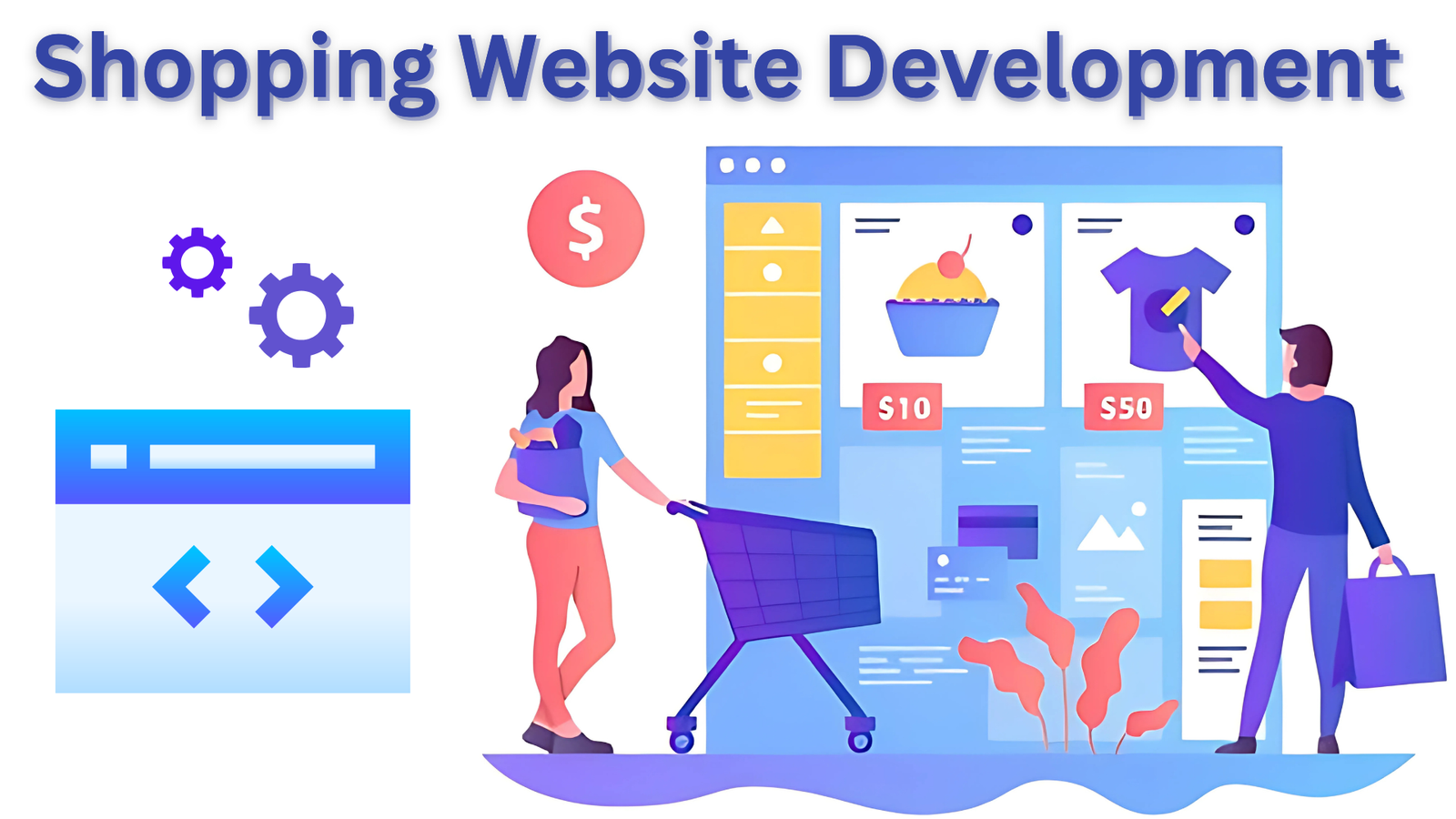How to Start an Online Business with E-commerce Website Development

In today’s digital world, starting an online business has become more accessible than ever. With the rise of e-commerce, entrepreneurs can now reach customers globally, create their own brand, and operate 24/7. One of the first steps to setting up an online business is developing a robust e-commerce website. Here’s a guide on how to start an online business with e-commerce website development.
1. Define Your Business Idea
Before diving into website development, it’s crucial to define your business idea clearly. Whether you plan to sell physical products, digital goods, or services, understanding your niche will help you choose the right platform and design.
- What will you sell? Products, digital goods, or services?
- Who is your target audience? Young adults, professionals, parents, etc.
- What is your unique selling proposition (USP)? How will your business stand out from competitors?
The clearer your business concept, the more streamlined your e-commerce website development process will be.
2. Choose the Right E-Commerce Platform
Selecting the right e-commerce platform is essential for the success of your online business. There are several options, each with unique features, pricing, and customization options. Some of the most popular platforms include:
- Shopify: Ideal for beginners, it offers easy-to-use features, scalability, and a range of templates.
- WooCommerce: A WordPress plugin, great for those already familiar with WordPress. It’s customizable and cost-effective.
- BigCommerce: Suitable for businesses that require more advanced features and scalability.
- Wix eCommerce: A drag-and-drop website builder with e-commerce capabilities, perfect for smaller businesses.
- Magento: Best for large businesses with complex needs; requires more technical expertise but offers robust functionality.
Your choice will depend on your business size, technical expertise, and budget. For instance, Shopify is great for startups, while Magento is better for established businesses with large inventories.
3. Register a Domain Name
Your domain name is the web address that customers will use to find your site (e.g., www.yourstorename.com). Choose a domain name that:
- Is memorable and easy to spell.
- Reflects your brand or product.
- Is short and concise.
- Uses a common domain extension like .com, .net, or .org.
Once you’ve decided on a name, use domain registration platforms like GoDaddy, Namecheap, or Google Domains to secure it.
4. Design Your E-Commerce Website
The design of your e-commerce site plays a huge role in user experience (UX) and conversion rates. It should be easy to navigate, visually appealing, and mobile-friendly. Some key design considerations include:
- User-Friendly Interface: Make sure your website is intuitive. Users should be able to browse products, add items to their cart, and complete purchases with minimal effort.
- Responsive Design: A large portion of online shopping occurs on mobile devices, so it’s critical that your website adapts well to various screen sizes.
- Product Pages: Each product page should have clear images, detailed descriptions, and important product specs. Include product reviews and ratings, which help build trust with customers.
- Checkout Process: Simplify the checkout process by offering multiple payment options (credit card, PayPal, etc.) and minimizing the number of steps it takes to complete a purchase.
- Branding: Use consistent colors, fonts, and logos that align with your brand identity.
Many e-commerce platforms like Shopify and WooCommerce offer pre-designed templates that you can customize. If you need something unique, you might want to hire a professional web designer or use a custom-built theme.
5. Set Up Product Listings
Once your site is designed, it’s time to add products. Here’s what you need to do:
- Product Titles & Descriptions: Use clear, concise titles and detailed descriptions. Highlight key features, sizes, colors, and specifications.
- High-Quality Images: Product images are crucial for online sales. Use high-resolution images with multiple views (front, back, close-up shots).
- Pricing: Set competitive prices based on market research. Consider offering promotions or discounts to attract customers.
- Inventory Management: Ensure you keep track of stock levels and update your website accordingly to prevent selling out-of-stock items.
6. Integrate Payment Gateways
A smooth, secure checkout experience is vital to the success of your online business. Integrating trusted payment gateways ensures that customers can complete transactions safely and quickly. Some common payment gateways include:
- PayPal
- Stripe
- Square
- Authorize.Net
Make sure to include different payment options to cater to a wide variety of customers, including credit/debit cards, PayPal, and even cryptocurrency if it aligns with your business model.
7. Optimize for SEO
Search engine optimization (SEO) helps your e-commerce website rank higher in search engine results, driving organic traffic to your site. Some SEO strategies for e-commerce websites include:
- Keyword Research: Use tools like Google Keyword Planner or Ahrefs to find relevant keywords for your product pages.
- On-Page SEO: Optimize product descriptions, images, meta tags, and URLs with relevant keywords.
- Content Marketing: Start a blog or create helpful content around your products to drive traffic and improve your SEO.
- Backlinks: Gain backlinks from authoritative websites to increase your site’s credibility in the eyes of search engines.
A solid SEO strategy can lead to long-term success by bringing free traffic to your site.
8. Set Up Logistics and Shipping
Managing inventory and handling logistics are essential components of your e-commerce business. You’ll need to decide on shipping methods, delivery options, and return policies. Here’s what to consider:
- Shipping Methods: Offer various shipping options such as standard, expedited, and international shipping. Some platforms like Shopify can help you set up integrated shipping options.
- Shipping Costs: You can offer flat-rate shipping, free shipping for orders over a certain amount, or calculated rates based on weight and location.
- Return & Refund Policy: Make sure to have a clear, fair return policy that builds trust with customers.
9. Launch Your E-Commerce Website
Once everything is set up, it’s time to launch your website. Before launching, ensure that you:
- Test the website thoroughly (check for broken links, test the checkout process, ensure all forms work).
- Set up Google Analytics to track website traffic and customer behavior.
- Create social media profiles and integrate them with your website to drive traffic.
- Send out an email blast to potential customers and start promoting your launch.
10. Market Your Online Business
After launching your e-commerce site, you’ll need to market your products to drive traffic and sales. Some effective marketing strategies for online businesses include:
- Social Media Marketing: Use platforms like Instagram, Facebook, Pinterest, and TikTok to showcase your products.
- Email Marketing: Build an email list and send out newsletters, promotions, and product updates.
- Paid Advertising: Run Facebook Ads, Google Ads, or influencer campaigns to drive traffic to your store.
- Content Marketing: Publish blog posts, videos, and tutorials related to your products to attract organic traffic.
11. Measure and Improve
Once your website is live and operational, continuously monitor its performance. Use tools like Google Analytics to track key metrics such as:
- Website traffic
- Conversion rates
- Bounce rates
- Sales data
This will allow you to optimize your website and marketing efforts, refine your product offerings, and improve customer satisfaction.
Conclusion
Starting an online business with e-commerce website development requires careful planning, a solid business concept, and ongoing effort to attract and retain customers. By choosing the right e-commerce platform, designing an easy-to-use and visually appealing site, offering excellent customer service, and effectively marketing your products, you can build a successful online business that thrives in today’s competitive digital marketplace.







